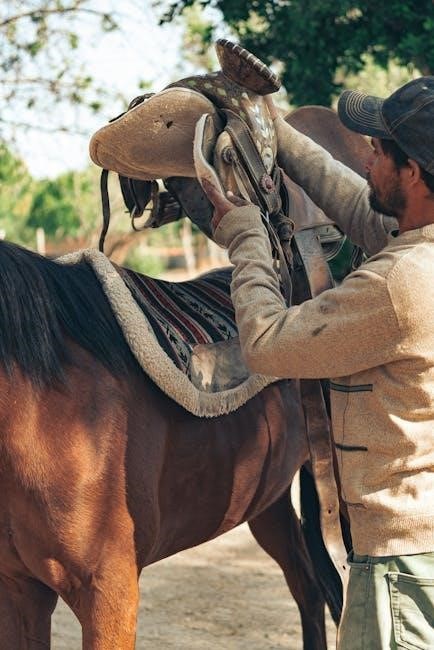Manual trainer MTB is a device for improving balance and control,
featuring
a rear-wheel and nose manual balance machine for personal home usage or coaching schools, with simple functionality.

Definition and Purpose of Manual Trainer MTB
A manual trainer MTB is a device designed to help mountain bikers improve their balance and control skills, specifically for manualing and wheelieing. The purpose of a manual trainer MTB is to provide a safe and controlled environment for riders to practice and master these skills. This is achieved through the use of a rear-wheel and nose manual balance machine, which allows riders to focus on their balance and control without the risk of crashing or losing control. The manual trainer MTB is suitable for personal home usage or coaching schools, and is a valuable tool for riders of all skill levels. By using a manual trainer MTB, riders can improve their overall bike handling skills, increase their confidence, and enhance their performance on the trails. With its simple and functional design, the manual trainer MTB is an essential tool for any mountain biker looking to improve their skills.
Benefits of Using a Manual Trainer MTB
The benefits of using a manual trainer MTB are numerous, with riders experiencing significant improvements in their balance and control skills. By practicing with a manual trainer MTB, riders can develop the strength and technique needed to manual and wheelie with confidence. This, in turn, can lead to improved overall bike handling skills, increased confidence, and enhanced performance on the trails. Additionally, using a manual trainer MTB can help riders to identify and correct any bad habits or techniques, allowing them to ride more efficiently and effectively. With regular practice, riders can also improve their core strength, balance, and coordination, leading to a more enjoyable and rewarding riding experience. Overall, the benefits of using a manual trainer MTB make it an essential tool for any mountain biker looking to improve their skills and take their riding to the next level, with improved performance and confidence.

Types of Manual Trainers Available
Manual trainers include MTB hopper and DIY machines, offering various options for riders to improve skills and balance with functional devices and coaching tools always available online.
MTB Hopper Manual Balance Machine
The MTB Hopper Manual Balance Machine is a device designed to help riders improve their balance and control on a mountain bike. This machine allows riders to practice manualing and wheelieing in a safe and controlled environment. With its rear-wheel and nose manual balance design, the MTB Hopper is perfect for personal home usage or coaching schools. The machine is simple and functional, making it easy to use for riders of all skill levels. By using the MTB Hopper, riders can improve their overall bike handling skills and gain more confidence on the trails. The machine is also lightweight and portable, making it easy to transport to different locations. Whether you’re a beginner or an experienced rider, the MTB Hopper Manual Balance Machine is a great tool to help you improve your skills and take your riding to the next level with improved balance and control always.
DIY MTB Manual Machine
A DIY MTB manual machine can be a cost-effective and fun way to improve your mountain biking skills. By building your own manual machine, you can customize it to fit your specific needs and riding style. The process of building a DIY manual machine can be a great learning experience, teaching you about the mechanics of a manual machine and how it works. With a few simple tools and materials, such as 2x4s and a screwdriver, you can create a functional manual machine in your own home or garage. The DIY approach also allows you to make adjustments and modifications as needed, ensuring that your manual machine is always tailored to your riding goals. Whether you’re a seasoned rider or just starting out, a DIY MTB manual machine can be a great way to improve your skills and have fun while doing it, with the ability to always make changes.

How to Build a DIY Manual Trainer
Building a DIY manual trainer requires tools and materials, including 2x4s, a screwdriver, and a bike, to create a functional trainer for improving MTB skills at home.
Step 1: Tools and Materials Needed
To start building a DIY manual trainer, it is essential to gather the necessary tools and materials. This includes a screwdriver, drill, and saw for cutting and assembling the trainer. Additionally, 2x4s or similar wooden planks are required to create the frame of the trainer. A bike is also needed, specifically a mountain bike, to attach to the trainer. Other materials such as wood screws, nails, and a hammer may be required to secure the frame and attach the bike. It is crucial to have all the necessary tools and materials before starting the project to ensure a smooth and efficient building process. With the right tools and materials, building a DIY manual trainer can be a fun and rewarding experience, allowing riders to improve their MTB skills at home. The materials should be durable and sturdy to support the bike and rider.
Step 2: Measuring and Cutting the Bike
Measuring and cutting the bike is a crucial step in building a DIY manual trainer. The bike’s rear wheel and frame need to be measured to determine the correct position and height for the trainer. The measurements will help to ensure that the bike is properly secured and balanced on the trainer. Cutting the bike’s frame or wheel may not be necessary, but rather modifying the trainer to fit the bike. A DIY manual trainer typically requires attaching the bike to a wooden or metal frame, which is designed to hold the bike in place. The measurements should be taken carefully to avoid any mistakes or damage to the bike. With accurate measurements, the trainer can be built to provide a stable and safe platform for practicing MTB skills, such as manualing and wheelies. The goal is to create a trainer that mimics the feel of riding on a trail.

Using a Manual Trainer for MTB Skills
Manual trainers improve MTB skills, including balance and control, with regular practice and training sessions using the device.
Improving Balance and Control with a Manual Trainer
A manual trainer is a valuable tool for improving balance and control on a mountain bike, allowing riders to practice and refine their skills in a safe and controlled environment. The trainer enables riders to focus on their balance and control, without the distraction of navigating trails or roads. By regularly using a manual trainer, riders can develop the muscle memory and coordination needed to maintain balance and control on their bike. This can be especially beneficial for beginners or those looking to improve their overall riding skills. The manual trainer can also be used to practice specific skills, such as wheelies or nose manuals, and can help riders build confidence and improve their overall riding ability. With consistent practice and training, riders can see significant improvements in their balance and control, allowing them to tackle more challenging trails and ride with greater confidence and precision.
Advanced MTB Skills with a Manual Trainer
A manual trainer can be used to develop advanced MTB skills, such as advanced wheelies and nose manuals, by allowing riders to practice and refine their techniques in a controlled environment. The trainer enables riders to focus on specific skills, such as balance, coordination, and timing, and to build the muscle memory and confidence needed to perform these skills on the trail. With a manual trainer, riders can practice advanced skills, such as switching between different types of manuals, and can develop the ability to adapt to different terrain and conditions. The trainer can also be used to practice skills, such as jumps and drops, and can help riders build the confidence and ability needed to tackle challenging trails and features. By using a manual trainer to develop advanced skills, riders can take their riding to the next level and enjoy a more challenging and rewarding ride. Regular practice with a manual trainer can lead to significant improvements in overall riding ability.